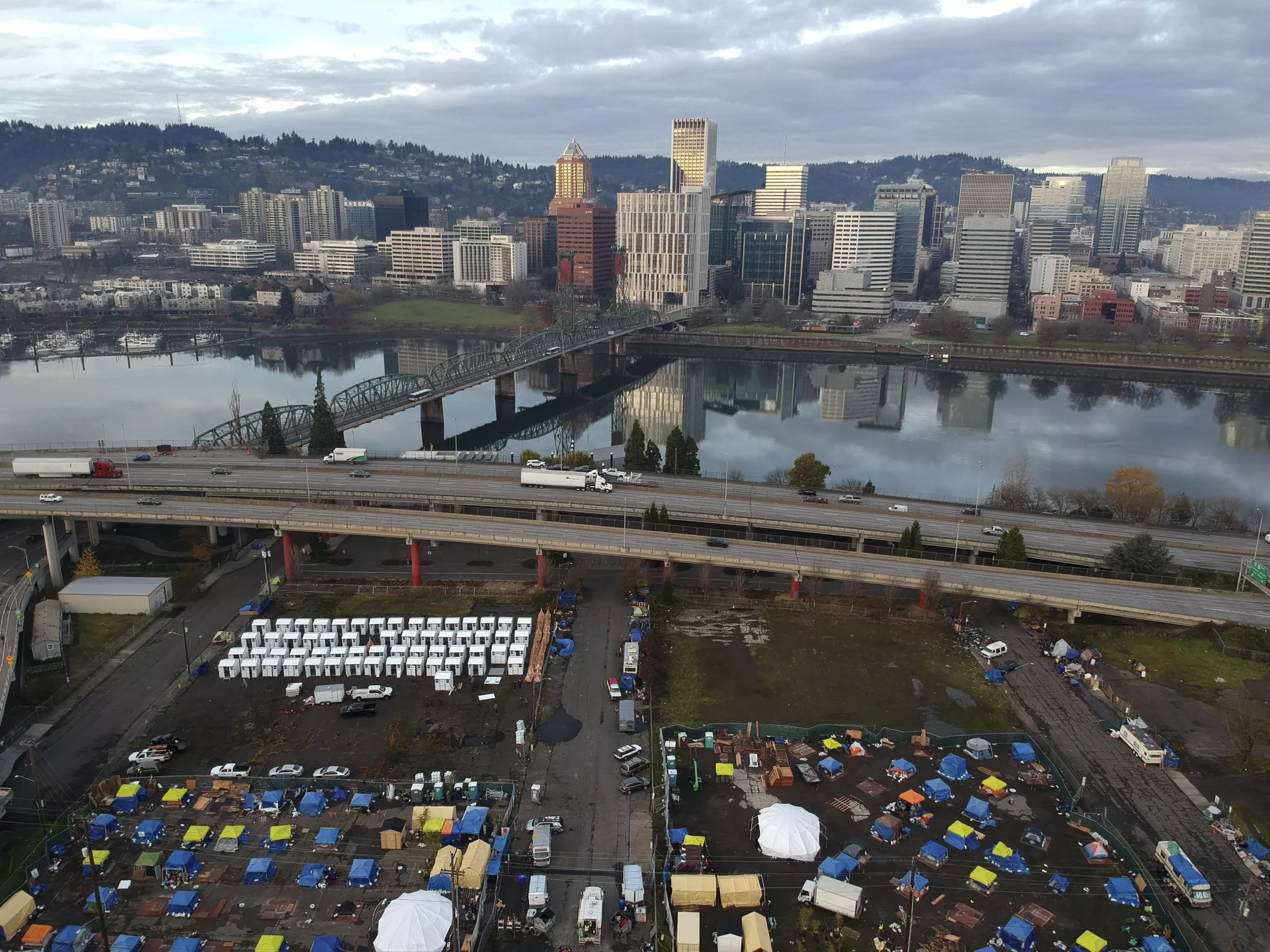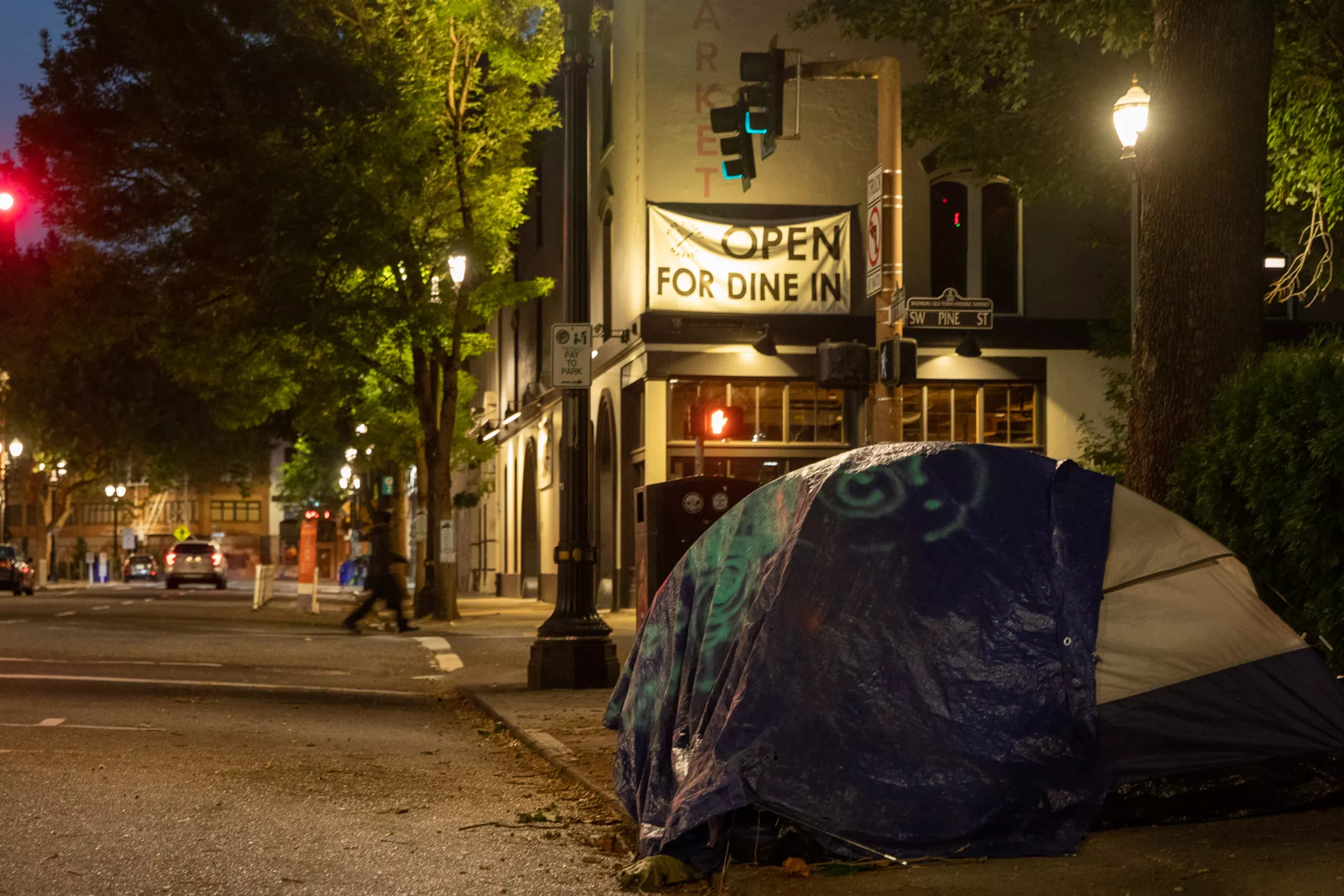What’s the matter with Portland? Shootings, theft and other crime test city’s progressive strain
PORTLAND, Ore. —
If you want to understand the schism that dominates the political and social landscape in this famously liberal city, a walk down Southeast Rhine Street might be a good place to start.
Flora Gonzalez, who lives on the north side of the street, is distressed about conditions in the historically blue-collar neighborhood.
The 40-year-old package handler for FedEx said that people have openly dealt drugs and urinated on the sidewalk outside her family’s duplex. They’ve dumped feces and used syringes in her manicured yard, played booming music at 3 a.m. and stripped stolen cars for parts. Shots have been fired behind her children’s bedroom.
“We feel abandoned,” Gonzalez said. “We pay our taxes and the police are not watching over our security.”
But Juniper Simonis, who rents a home across the street, said she opposed calls for police clampdowns.
The 38-year-old environmental biologist and data scientist, whose frontyard features a handmade “DISARM, DEFUND, DISMANTLE POLICE” sign, said Portland officials continued to fail the homeless by underfunding services and “sweeping” camps with callous disregard for people’s dignity and property.
An activist who marched downtown in 2020, Simonis said the problem is not that Portland is too liberal, but that it is not liberal enough. “There’s a lack of resources, and I think of being liberal in terms of spending money to provide support services,” Simonis said. “Trying to regulate homelessness out of a city, I don’t view that as liberal at all.”
Long hailed as a model of conscientious urban planning and civic engagement, Portland is facing a crisis of confidence. Nearly three years after pandemic lockdowns emptied out the city’s core and protests against police brutality turned a few downtown blocks into a battleground, this city of about 641,000 is dealing with skyrocketing numbers of homeless people, soaring crime and strikingly high levels of public dissatisfaction with what the city is doing about it.
Over the last three years, the number of unhoused people in the metro area has jumped from about 4,000 to at least 6,600. Shootings in the city have tripled. Homicides climbed from 36 in 2019 to 97 last year — a record. Lower-level crimes have spiked too: More than 11,000 vehicles were stolen in 2022, up from 6,500 in 2019.
The Hawthorne Bridge crosses the Willamette River in Portland, Ore., where polls last year showed only 11% of voters thought the city was heading in the right direction.(Wolfgang Kaehler / LightRocket via Getty Images)
“You don’t have to watch Fox News to look around Portland and say, ‘This is not cool,’” said City Commissioner Mingus Mapps, a Democrat and former political science professor at Brandeis University.
Fatal drug overdoses nearly doubled between 2019 and 2021 across Multnomah County. The fentanyl epidemic combined with the housing crisis, Mapps said, made for a “scary” situation.
Conservatives have long branded this city Exhibit A for how liberals and progressive policies have run amok. While many Portlanders roll their eyes at such tropes, polls conducted last year showed only 11% of voters thought Portland was heading in the right direction — a steep drop from 36% in 2020 and 76% in 2000.
A backlash is underway. In November, voters passed a measure to overhaul city government and ousted the city’s most outspoken left-wing commissioner, who led a 2020 charge to cut police funds. But they are struggling to agree on how it can return to being the place many once viewed as a liberal utopia.
Tents fill a vacant parking lot in Portland in December 2020. (Craig Mitchelldyer / Associated Press)
For nearly half a century, Portland was lauded as a model American metropolis, thanks to public and private initiatives, its waterfront and its proximity to mountains and coast.
In the 1970s, as the western suburbs grew and downtown’s older buildings were razed for parking lots, Portland began to take key steps that set it apart from most other U.S. cities. To ward off rising crime, neighborhood groups and activists worked with city leaders to revitalize downtown by expanding public transit, preserving historic buildings and fostering new public space and retail stores.
At the same time, Oregon’s governor pushed to create urban growth boundaries to preserve the state’s natural beauty and encourage downtown density, and to demolish the city’s riverfront highway to reclaim it as a waterfront park.
Portland began to reach the top of list after list of livable American cities, winning accolades for its thoughtful planning. In 1992, journalist and urban critic Philip Langdon marveled at how “this courteous, well-kept city of 453,000, and especially its downtown, has become a paragon of healthy urban development.”
Portlanders enjoy a sunny day at Jamison Square. (Getty Images)
By the late 1990s, Portland was starting to become a top destination for college-educated 20- and 30-somethings lured by its affordability, DIY mentality and the riot grrrl and indie rock scene.
A decade later, the TV show “Portlandia” cast the city as the place “where young people go to retire,” a twee sanctum where privileged residents cultivated esoteric identities, experimented with pursuits like craft beer and kombucha, and waged grand battles over tiny differences.
But the model American metropolis was evolving — and the combination of population growth, a housing shortage and the strict urban growth boundary started pricing out poor residents. By 2015, rents were rising more sharply than in almost any other U.S. city. Homelessness began to rise.
In 2018, voters in this predominantly white city elected their first Black female city commissioner: Jo Ann Hardesty, a left-wing activist who had campaigned for police reform and reducing city sweeps of homeless encampments.
It was time, she said in her victory speech, “for a different kind of Portland.”
A tent on a Portland sidewalk in September 2022. (John Rudoff / For The Times)
Read More Here: LA Times











